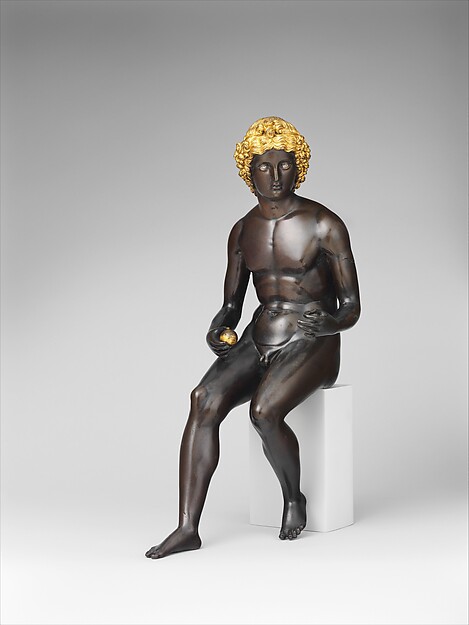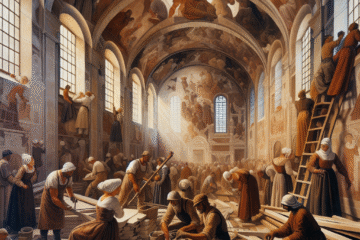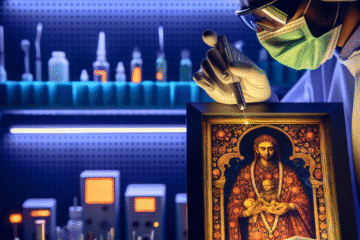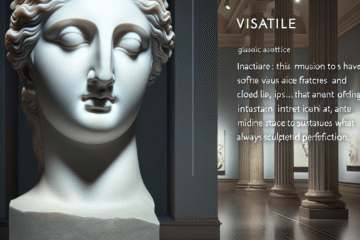
Image title: Paris
Medium: Bronze, partially fire-gilt, silver inlay
Date: ca. 1518–1524
Source:
The Met Collection
“
The attempt to combine wisdom and power has only rarely been successful and then only for a short while.
”
— Albert Einstein
The Bronze Dilemma: Why Ancient Sculptures Rarely Survive
The Lustrous Beginning: Bronze in Ancient Art
Bronze, an alloy of copper and tin, marked one of the earliest technological revolutions in human history. Its durability, malleability, and metallic sheen made it an ideal medium for sculpture, armor, and tools. In ancient civilizations such as Egypt, Mesopotamia, Greece, and Rome, bronze was not only functional but also aesthetic. Sculptors used it to achieve dynamic poses, realistic anatomy, and intricate detailing that stone could rarely replicate. From the charioteer of Delphi to Greek gods in battle stances, the bronze statue became a hallmark of classical artistic achievement—a visual testament to the human form in motion.
Melting the Gods: Economic and Military Reuse in Antiquity
Despite the remarkable artistry of these bronze masterpieces, very few survive today. One primary reason is the high economic value of the material itself. Throughout history, bronze statues were routinely melted down to repurpose the metal for weaponry, coins, or building materials—especially during periods of war or economic strain. Victorious armies took more than just land; they looted temples and public forums, often reducing rich visual legacies to raw materials to fund further conquest or serve utilitarian needs. The sack of Constantinople in 1204 and Rome’s periodic plundering are stark reminders of how artistic treasures were sacrificed to fuel the engine of empire.
Iconoclasm and Ideological Shifts: From Pagan Idols to Christian Morality
Another significant factor behind the disappearance of bronze sculptures is ideological destruction. As Christianity gained ascendancy in the Roman Empire during the 4th century CE, traditional Greco-Roman art came to be viewed with suspicion—its pantheon of gods interpreted as pagan and thus morally corrupt. Subsequent emperors and religious leaders ordered the removal or destruction of statues in an effort to purge idolatry. This systematic iconoclasm wasn’t just a theological movement; it was also a rewriting of cultural memory. Bronze statues that once adorned temples and public spaces were melted and recast into church bells, crosses, or ecclesiastical vessels—literal transformations of theology into metallurgy.
Buried Beauties: Accidental Survivors of the Deep
Ironically, many of the bronze sculptures that survive today escaped destruction by accident. Shipwrecks, earthquake-induced collapses, and fortuitous burials have preserved a handful of bronze masterpieces in the very state they fell. The Riace Warriors—two larger-than-life male figures discovered off the Calabrian coast in 1972—are striking examples of sculptural brilliance saved by maritime misfortune. These discoveries underscore how much of ancient art history remains hidden or lost—not through neglect, but due to the potent mix of human violence, shifting ideology, and pragmatic repurposing. Each recovered statue offers more than aesthetic pleasure; it restores a fragment of cultural identity long thought annihilated.
Modern Reverberations and the Value of Memory
Today, bronze sculpture continues to carry connotations of permanence and prestige, from Rodin to contemporary public installations. Yet the fragility of its historical presence serves as a cautionary tale. The ancient world’s bronze legacy was not lost through ignorance but through informed decisions—economically rational, religiously justified, and politically motivated. These choices reflect deeper human impulses: to conquer, to believe, and to survive. As contemporary societies grapple with similar tensions—deciding what to preserve, repurpose, or erase—the story of lost bronze statues challenges us to rethink the permanence of culture and the responsibility of memory. Behind every absent artifact lies a series of choices, and behind every rediscovered statue, a whisper from the past.

Image description:
Standing Golden Buddha sculpture. Treasure No. 328 in South Korea.
License:
KOGL Type 1
Source:
Wikimedia Commons
Useful links:


